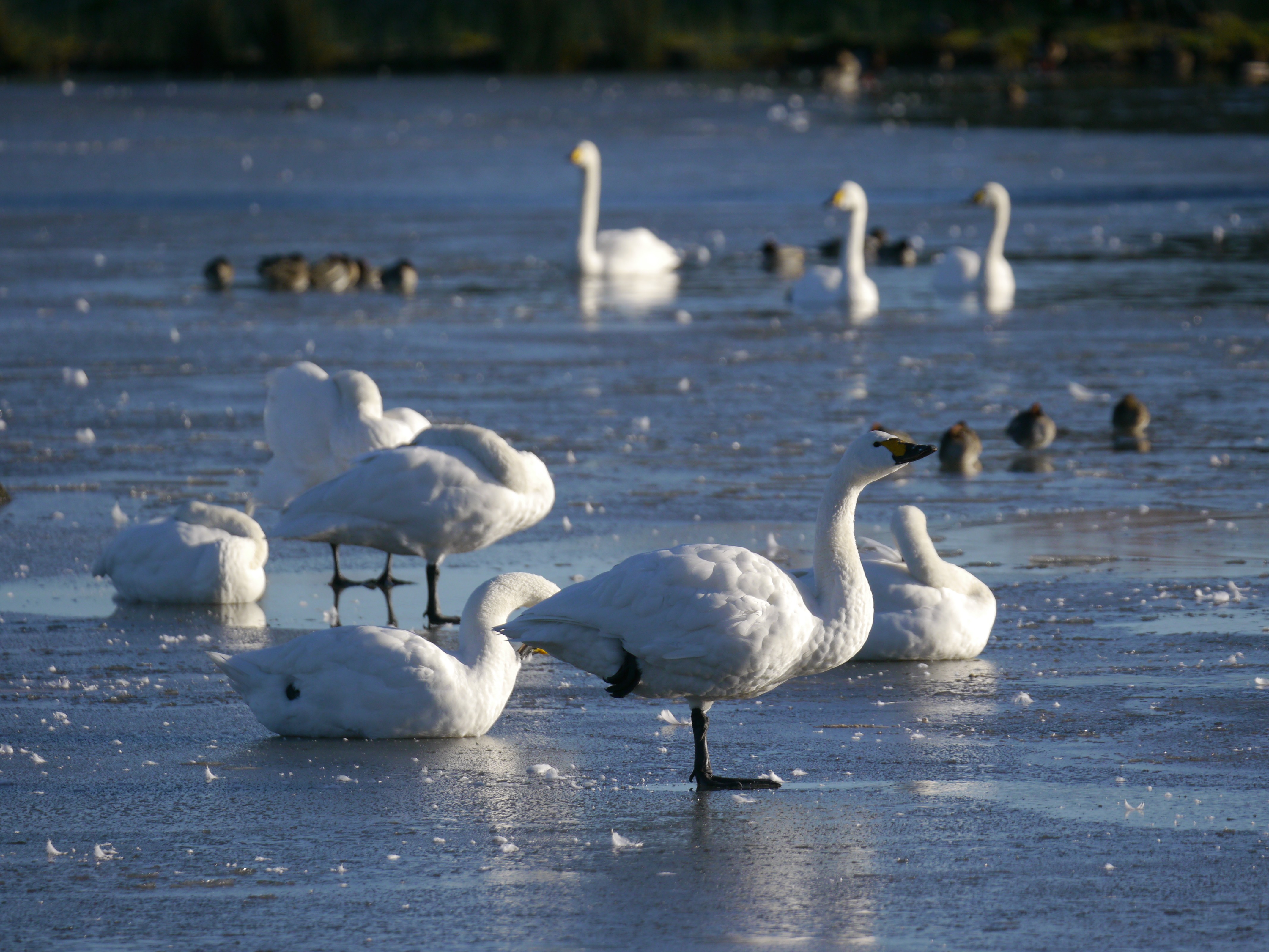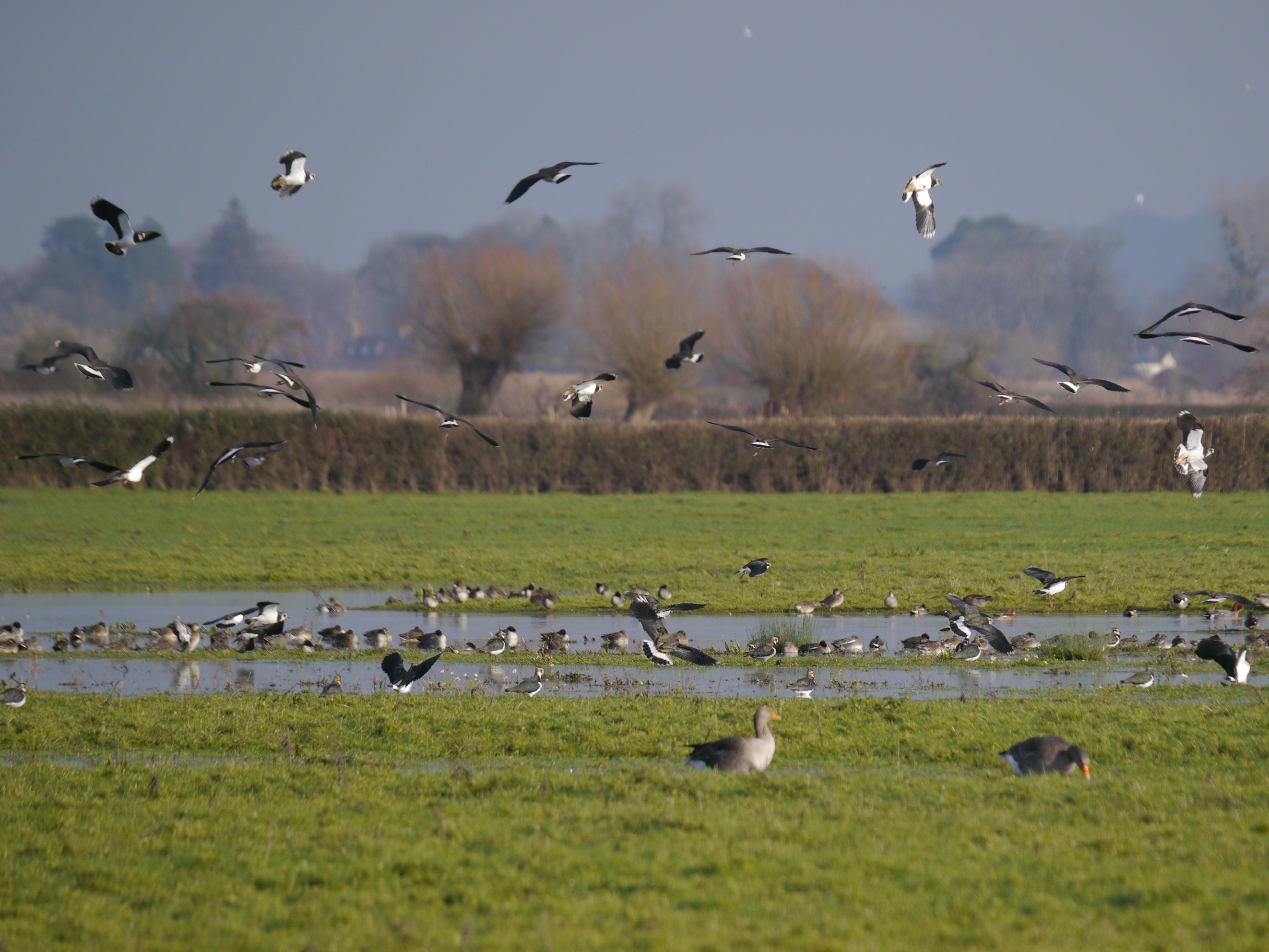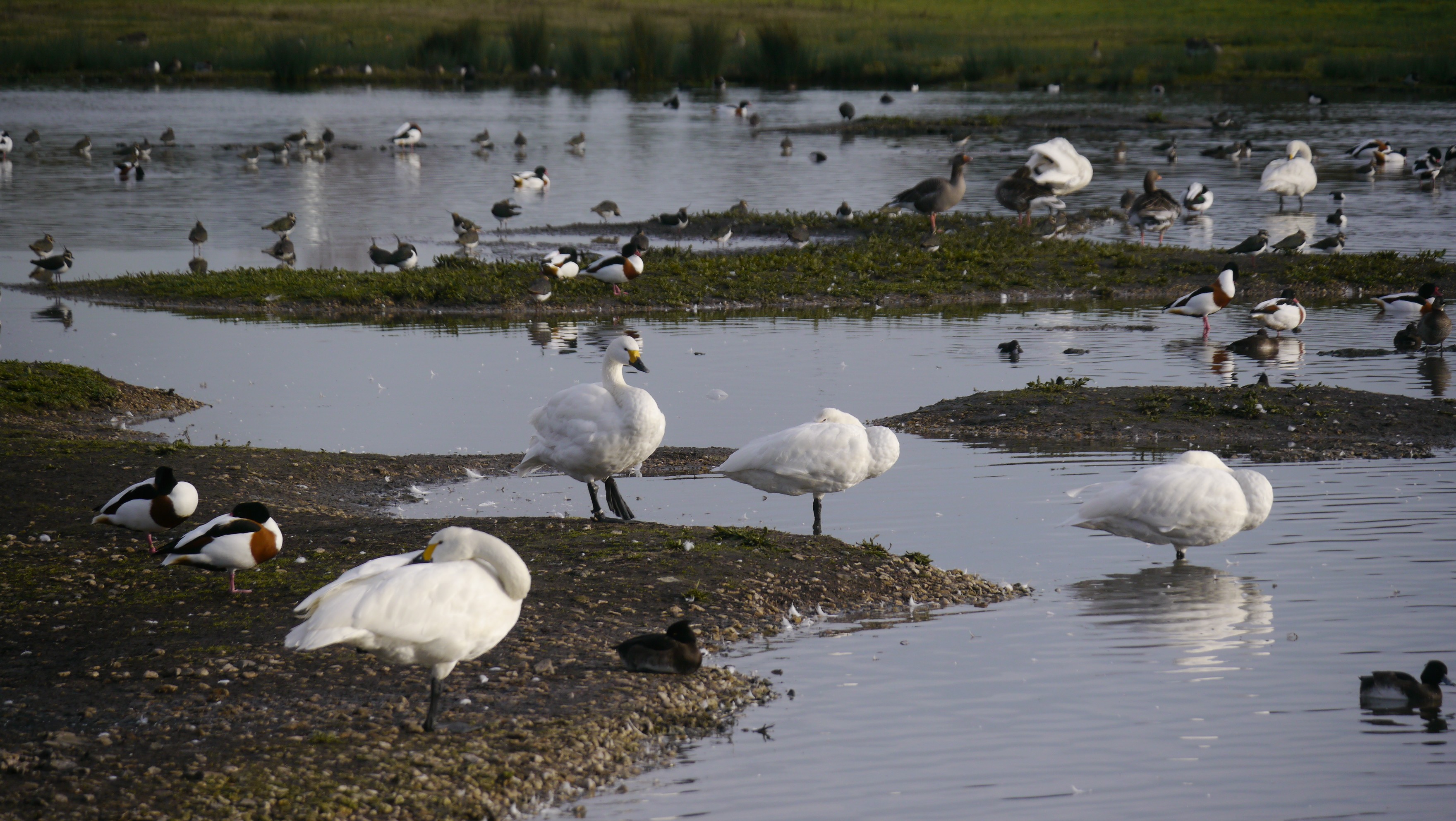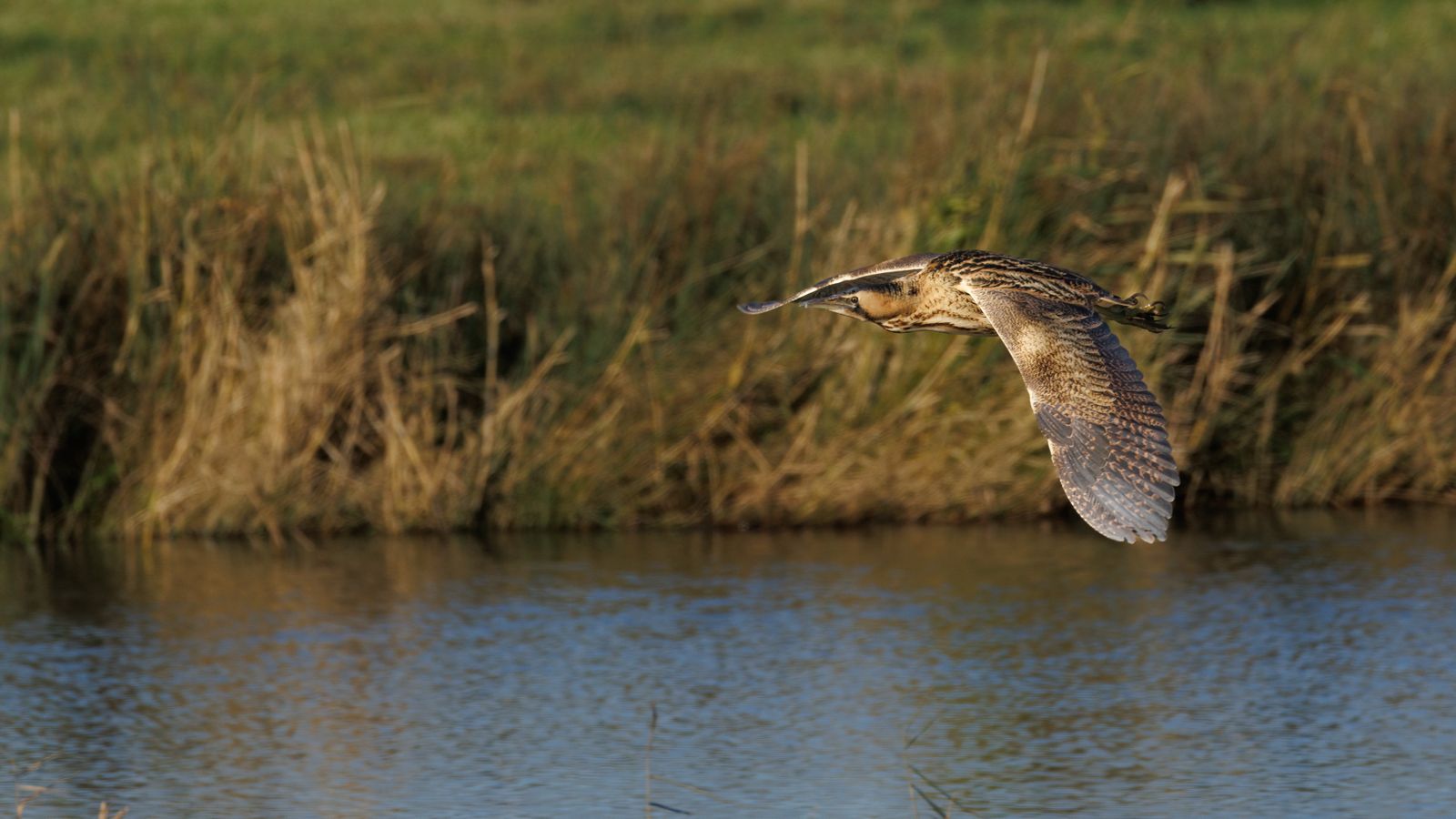High tide goodies continue
Today's high tide is around 12noon, with a good variety of waders and other species on offer as the waters' rose.

Today's high tide is around 12noon, with a good variety of waders and other species on offer as the waters' rose. Although we're now past the peak height for this cycle, today's tide was still forecast to be 8.5m and enough to submerge all the mudflats and push birds to roost on the Dumbles riverbank, offering good views from Middle Point.
If you want to view the high tide roost, we recommend arriving two hours before high tide to watch the full spectacle. The Severn Bore occurs with every tide, so twice a day, and passes two hours before high tide. Over the next hour the mudflats disappear and the second hour the water rises. From Middle Point, look south along the riverbank to see the roosting birds.
Middle Point
As high tide approached there was a mixed flock of small waders heading to roost on the riverbank. Counts earlier this morning at low tide produced 99 Dunlin, 12 Curlew, 79 Ringed Plover, 19 Sanderling and a breeding plumage Knot. The high tide roost added two Grey Plover, two Whimbrel and another three Curlew to the totals. A Kestrel caught brunch along the fence line, and out in the water at high tide a Habour Seal drifted past. The animal has been in the estuary for a few days now. Four Common Tern were also seen.
Summer Walkway
A breeding plumage Golden Plover was on the Tack Piece again.
Kingfisher Hide
The adult Kingfishers continue to feed their young in the nest this morning.
Estuary Tower
The four unringed Cranes dropped in mid-morning, and were carefully watched by the breeding pair on the Dumbles scrape. Monty & Evie continue to incubate the egg, so we don't yet know if she has laid a second. Also on the scrape were a pair of Oystercatcher and 18 adult Avocet, one pair of which have a brood of three chicks.
Zeiss Hide
Both Crane chicks are doing well with their parents on the Top New Piece. It is a long-way until they fledge so we keep everything crossed. At present we have six chicks on the reserve from four families. A very smart drake Garganey was also on the Top New Piece, along with 27 Gadwall and a flock of 22 Black-tailed Godwit who arrived from the South Lake. Later in the morning the two immature Spoonbill dropped in.
Robbie Garnett Hide
A breeding plumage Great Egret was again close to the hide. The bird was on the Pillbox Pool nearby first thing, and then moved to the Dumbles scrape but was chased off by the Avocet. The drake Pintail is still present, and also noted were a drake Shoveler, three Gadwall, two pairs of Tufted Duck and 11 Avocet.
South Lake
A total of 54 adult Avocet with at least six chicks were on the wader scrape. There could be more chicks as one family was being brooded in the drizzle. Also of note were 51 Black-tailed Godwit which later departed and split between the Rushy and Top New Piece, a lone male Little Ringed Plover, a drake Shoveler, two second-calendar year Mediterranean Gull were on the causeway, and an adult Little Grebe was on the deep lake
Rushy Hide
The Little Ringed Plover pair still have their single chick, the Crane family were sheltering on the causeway from drizzle, and as it dried out revealed they still have their two chicks. Other birds of note included two drake Shoveler, four Shelduck, a Common Sandpiper, a Redshank and 36 Avocet.



